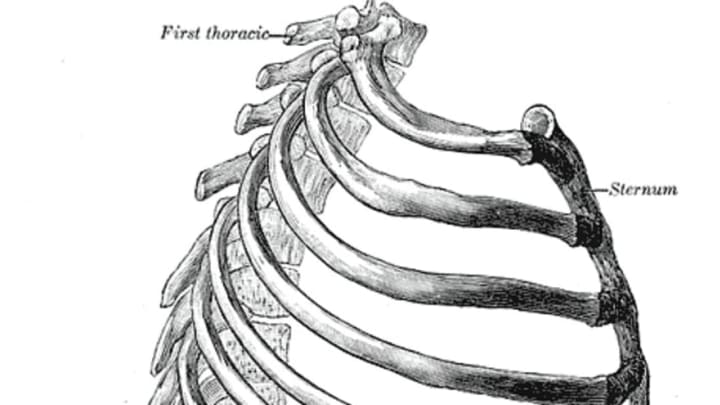Why It Should Have Been Carter and Gray's Anatomy

You don’t have to be pre-med (or a fan of medical dramas) to know Gray’s Anatomy. The famous illustrated textbook has been educating medical professionals since its release in 1858. Written by English surgeon Henry Gray, the book has been in continuous print for more than 150 years.
But Gray only wrote it. Without the 1,000+ detailed illustrations within, the book would be nearly useless. That’s where Henry Vandyke Carter comes in. Like Gray, Carter was a surgeon at St. George’s Hospital in London. When Gray approached his colleague about writing a textbook, it took a little coaxing. Carter worried the job would be “too exacting,” but he desperately needed the money and accepted for 10 pounds per month for 15 months. The pair ended up conducting research and dissections for closer to two years. All signs point to the two men sharing the workload equally.
So, why didn’t the title feature both surnames? Originally, the book credited no one in the title. It was simply called Anatomy, Descriptive and Surgical, a practical if bland name. The spine, however, identified the book as Gray’s Anatomy, shorthand that helped differentiate it from other popular medical texts of the day, like Quain’s Anatomy and Wilson’s Anatomy. The shorter name eventually stuck.
Make no mistake, though—the abbreviated title that gave sole credit would have delighted Gray, who had a history of accepting accolades for his partner’s work. Before Anatomy, Descriptive and Surgical was published, Carter created drawings, paintings, watercolors, and wood engravings for a dissertation Gray wrote on the spleen. Gray failed to credit Carter, even after the essay became highly regarded and even prize-winning.
While it’s tempting to write this off as an unfortunate oversight, the edits Gray made to the title page of Gray’s Anatomy make it unlikely. In an early proof, Gray made a notation on the title page to make Carter’s byline half the size of his own. At one point, likely in an attempt to establish author credibility, the publishers added a line about a prestigious professorship Carter had recently accepted. Gray had it struck.
These days, Carter’s name is now prominently featured on the cover, but decades of damage have already been done. Despite dying of smallpox in 1861 at the young age of 34, Henry Gray secured a spot in medical and literary history. Henry Vandyke Carter died in relative obscurity 36 years later.